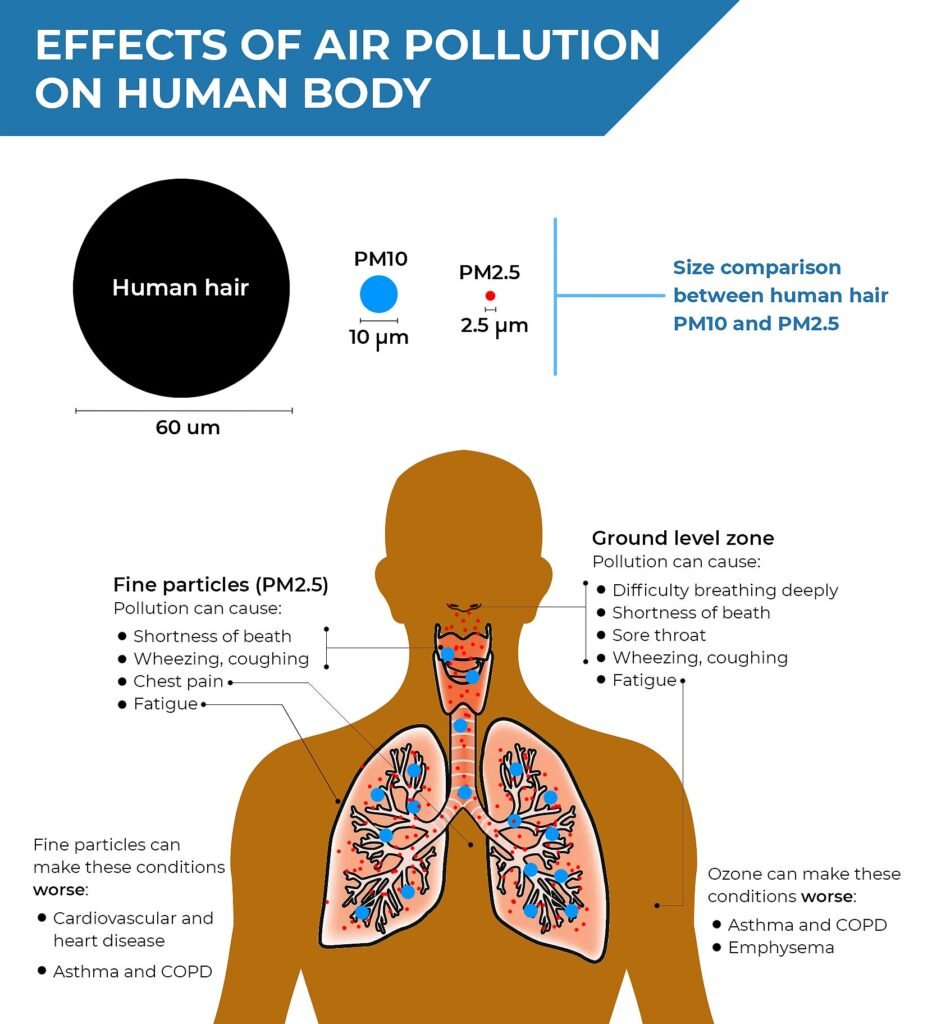According to a large new research, 99 percent of the worldwide population — nearly everyone on the planet — is exposed to dangerous air particles known as particulate matter 2.5 (PM 2.5.)

PM 2.5 is a microscopic particle with a diameter of no more than 2.5 microns — about thirty times smaller than a grain of sand — that may readily enter our lungs and bloodstream. Although lung cancer is an apparent concern, PM 2.5’s ability to induce and worsen cardiac disease should not be underestimated.
Air pollution affects almost everyone. The startling finding is that practically all locations of the world have yearly average PM 2.5 concentrations that exceed World Health Organization (WHO) air quality limits.

In response to new understandings of how air pollution affects the human body, the WHO changed its air quality standards in 2021, lowering the PM 2.5 threshold from ten micrograms per cubic meter to merely five.
According to US Environmental Protection Agency (EPA) studies, even brief exposure to PM 2.5 can cause “cardiovascular disease-related heart attacks and mortality.” Long-term exposure can result in “an elevated risk of cardiovascular death and a reduction in life expectancy.”

The researchers also found that the global average level of PM 2.5 was extremely high between 2000 and 2019 at 32.8 micrograms per cubic meter, over six times the recommended threshold.
The new study also discovered that just 0.001% of the world population lives in locations with PM 2.5 levels below the acceptable threshold suggested by WHO, accounting for less than 0.18 percent of accessible territory. Such an alarmingly pervasive presence echoes the ominous death tolls found in other studies, such as a 2022 study published in The Lancet that determined air pollution was responsible for nine million premature deaths in 2015.
Reference- The Lancet, Journal The Lancet Planetary Health, The Washington Post, Futursim, The Guardian






